It is only after you reach Jomsom in half a day from Pokhara that you realize how distances (and time) have shrunk in Nepal.
A journey that used to take five days of steep climbs and descents is now a question of a few hours. And it will be even shorter once Nepal's trans-Himalayan highway is black-topped. Tourists, pilgrims, even conference participants have started streaming to Jomsom and Muktinath. Upper Mustang and Lo Manthang have suddenly become much more accessible for Nepalis.
Not everyone here is happy with this change. Tourism entrepreneurs are worried the road will damage Mustang's fragile culture and ecology. Seeing the haphazardly parked passenger jeeps at Jomsom bus park, you can already see the same squalour you see in Beni or Baglung. Noise and diesel smoke are the new hazards of walking Jomsom's cobblestone streets.
Trekker numbers have dropped, complain local hoteliers and they blame the road. Lodge owners in Tatopani, Ghunsa, Marpha and Tukuche who used to depend on night stop hikers have lost their business.
However, most traders and ordinary people are happy with the road. It makes things cheaper and they don't have to pay the extortion-rate tariff on the Pokhara flight. There are now 50 buses that ply to Muktinath every day from Jomsom, and an equal number that leave for Beni.
Trekking groups now take the high road to Jomsom from Ghodepani, avoiding the road. The new highway has also made the side valleys of East Dhaulagiri Glacier and Meso Kanto Pass more accessible.
 THE ROAD TO MUKTINATH WITH EKALBHATTI AND THE KALI GANDAKI |
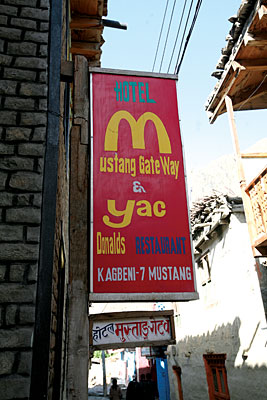 PRETEND MACS IN KAGBENI ARRIVE WITH THE ROAD |
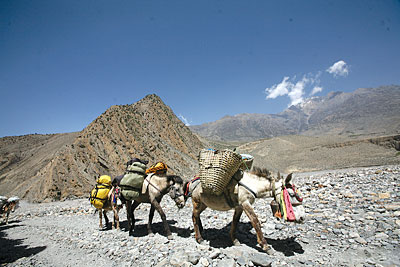 MULE TRAINS, BUT FOR HOW MUCH LONGER? |
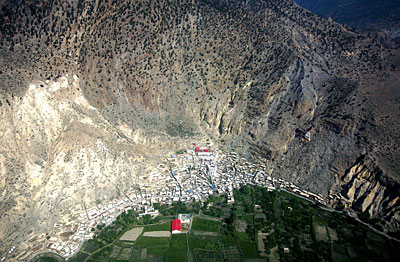 MARPHA FROM THE AIR |
 KAGBENI AND NILGIRI |
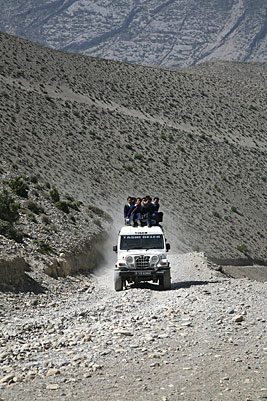 SCHOOL CHILDREN ON THE MUKTINATH COMMUTE |
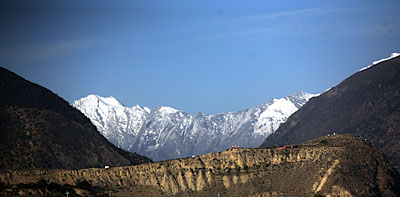 |
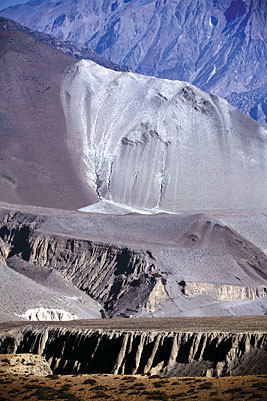 |
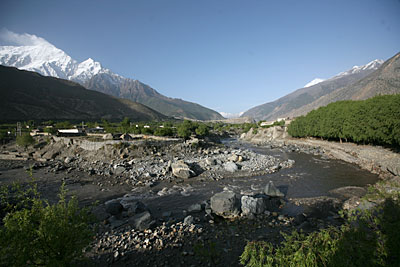 |
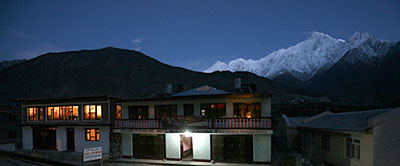 |
READ ALSO:
Horse trading - FROM ISSUE #455 (12 JUNE 2009 - 18 JUNE 2009)


